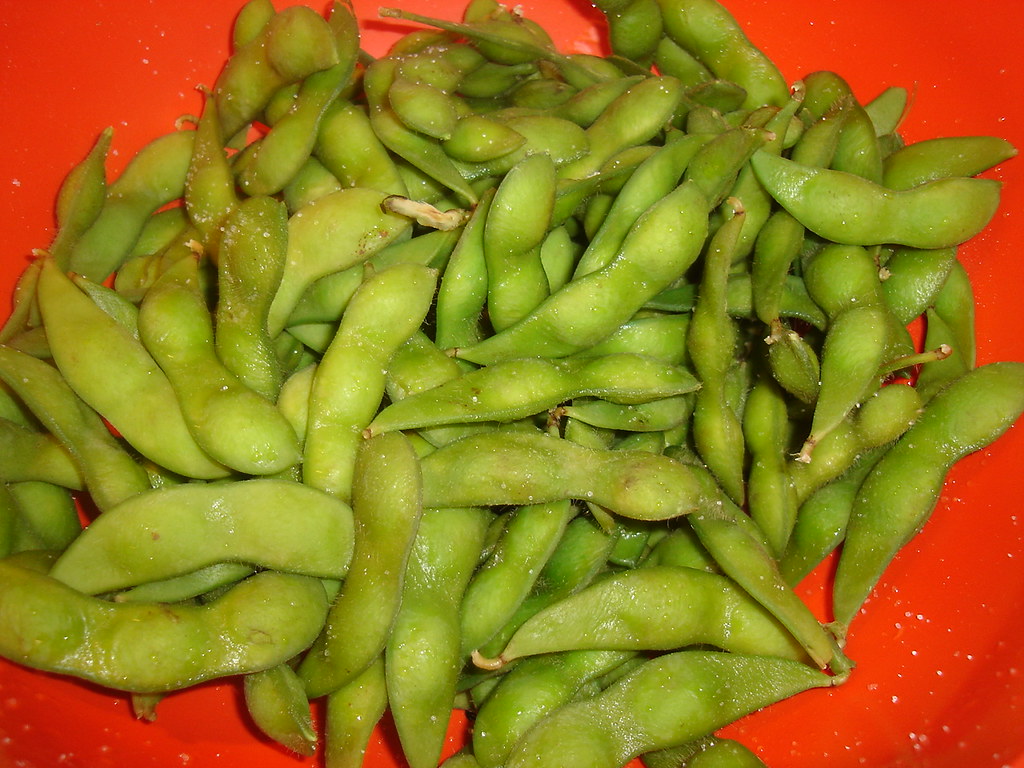Steamed air wafts out of the kitchen; windows are left open to let out the air’s humidity. A pot bubbles to a boil, causing great anticipation for those who eagerly await what is inside the pot. But what’s in there? If one were to peer in, they would find green pods, funny in size and shape. They have a lush green color, but on the outside are not as enticing as one might think. They bubble and curdle in the pot as the water comes to a boil, the luscious green pods are big, but they seem to have something inside of them, waiting to pop out. Of course, what lay in the pot are not green beans or sugar snapped peas, they are the often imitated, but never duplicated, traditional Japanese dish, Edamame.
Edamame (sometimes called young soybeans), has been growing in Asia for generations and have since spread to other places across the globe, including the Europe kitchen scene. In terms of the growing process, edamame is more drawn out than other fruits and vegetables. The planting season of edamame is what is the most interesting part of the growing process. Edamame needs a long growing season in the heat, which is why they are planted in early spring and brought up in early summer. Despite needing warm weather, edamame can also be grown indoors, allowing farmers around the world to cultivate this crop regardless of their seasonal weather. Instead of collecting the edamame when it’s ripe, it’s instead harvested just before they are fully matured. That’s why we see the soybean still in the pod when edamame is cooked.
Many people ask what is the difference — if any — between soybeans and edamame. Often, the two are referenced as the same, however, this is one of the biggest misconceptions, because they’re are stark differences between the two. As stated, edamame is harvested before it reaches the full maturity of being a soybean. This is why we get the lush green color of the edamame, rather than the whitish oakey color of the soybean. This makes it preferable for chefs as it adds some color to their plates. Many chefs prepare edamame the same way, as it’s a very delicate food. Typically, chefs use a little salt and add it to soups salads, or serve it as a side dish or appetizer on its own. The traditional preparation can be seen in Japanese Sushi Shops, where the steamed edamame is served with salt over top, creating a slightly salty flavor.
Edamame is fascinating in its color and growing process, however, debate in the food world focuses on its health benefits, or lack thereof. Many debate whether soy is good for you, especially in some thyroid studies, although, there is no significant data to back this claim. Some certain facts include that it is rich in multiple vitamins and minerals. This is coupled with the fact that it is high in protein and low in calories, making it a great snacking food for a weight cut. With everything that edamame has to offer, it seems like it will be staying in kitchens for now.





































